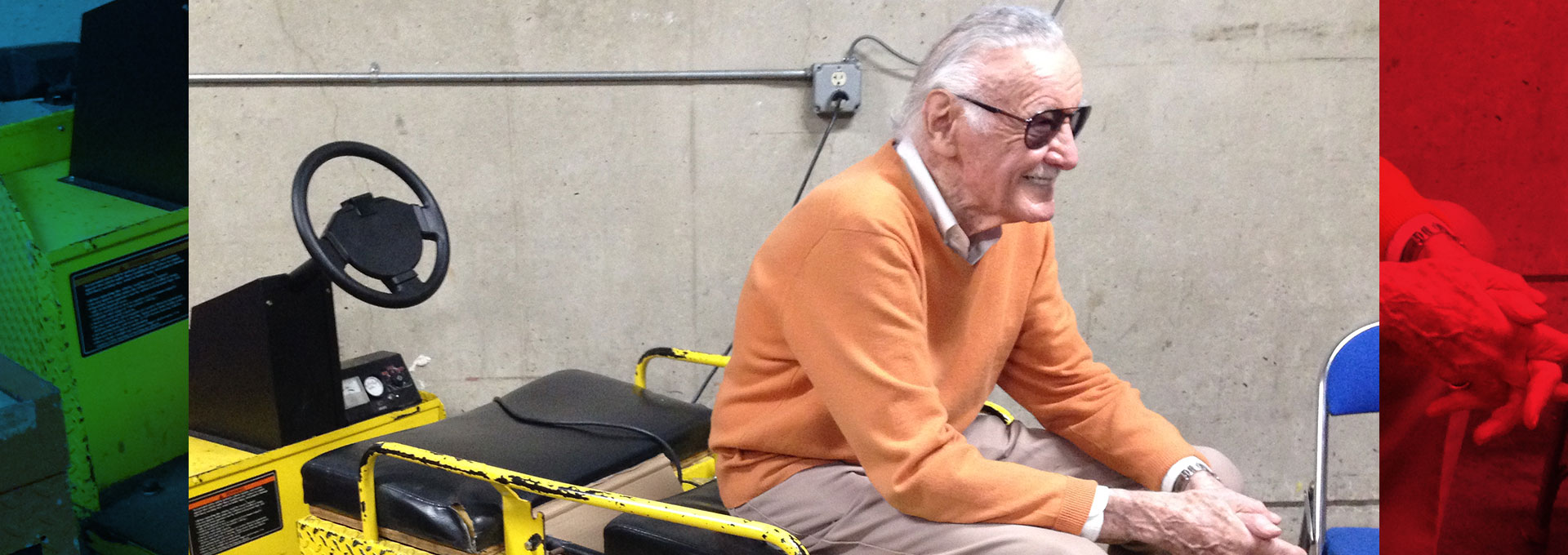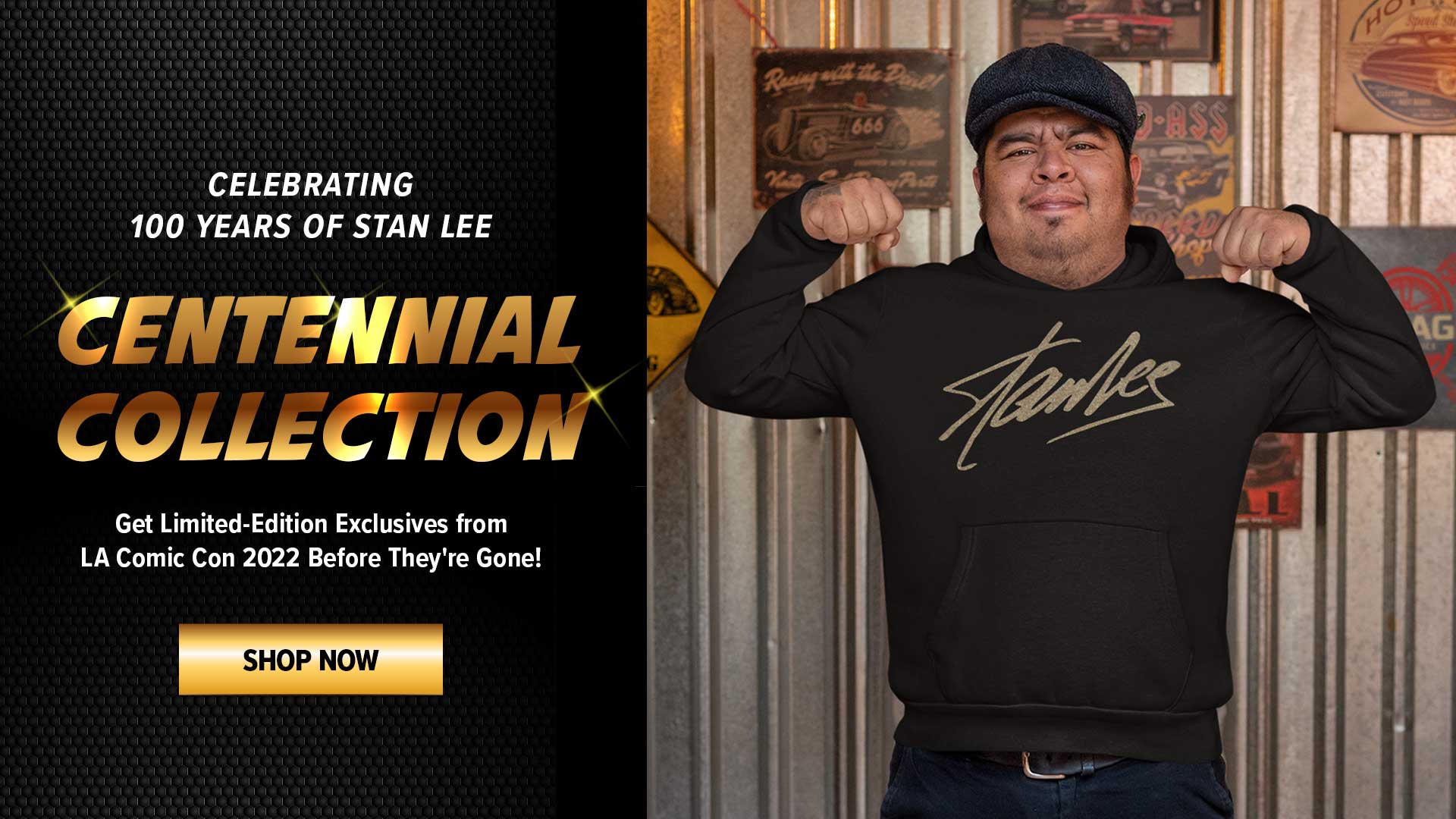When new acquaintances found out I worked for Stan Lee (a fact a well-meaning friend by my side usually divulged for me), they would typically ask: “Have you ever met him?” I always found that question rather funny, and my casual reply of “Yes, I see him every day,” normally floored them. Nine times out of ten, “What’s he like?” was frequently the follow-up.
Hmm, where to begin.
Well, Stan Lee was just a regular guy—who just so happened to change the world. That’s not to belittle his remarkable accomplishments or global stardom in any way, both of which are well-known and well-deserved. In fact, almost everywhere I turned during my eight years working at POW! I couldn’t help but notice Stan’s success in some shape or form. Fans who stopped him at conventions, interviews for international publications, visitors he entertained at the office, speeches he gave for the likes of the American Library Association, even Marvel-themed party favors in our local Rite Aid—they all reinforced how colossal Stan’s star was and how far-reaching his influence spread. But despite all the reminders, I frequently found myself forgetting that I worked for such a luminary.

Why? Well, while Stan was a legend to so many across the world, the majority of the time I spent working for him was comprised of quieter, more casual moments. Yes, he was still very much a gregarious man quick with a quip, but seeing him briskly walk down the hall every morning, casually munch on pizza when we’d have lunch in his office, or happily croon an old Irish folk tune to pass the time while signing autographs was standard operating procedure for those of us at POW! Despite his fame and fortune, Stan continued to work hard and pour himself 100% into every project he worked on, whether that meant giving notes, attending development meetings, or participating in interviews—all this, when he could have easily retired if he wanted to (the key word being ‘wanted’—he genuinely loved working). Stan remained easy-going, accessible, and charming even when the spotlight wasn’t on him and he wasn’t out in the public eye, where his celebrity was always accentuated. I found it nice that while he very much was Stan Lee: The legend, a man who could easily captivate an audience of thousands, off stage he acted like Stan Lee: The human. That same humanity he famously imbued his renowned characters with he wholeheartedly possessed himself.
As one of the few people who worked for him in recent years who wasn’t a die-hard comicbook fan, I struggled to contribute any insightful superhero trivia like most of my co-workers could regale Stan with, so I found another way to bond with him: classic films. Stan always seemed surprised when I reminded him of that passion of mine, but he was happy to share memories of his favorite movies and actors, particularly from the 1930s; films like The Scarlet Pimpernel (1934) and The Adventures of Robin Hood (1938) greatly influenced him, and I relished the chance to speak with him about a part of his childhood that he was not often asked about. (Accompanying him on a shoot in which he portrayed Errol Flynn in The Adventures of Robin Hood for an Arclight Cinemas campaign was definitely a treat.) To chat with someone who not only was alive when these movies came out but who also met some of the legends we gazed at in black and white was surreal—and another way I viewed Stan as a regular guy. This celebrity had his own celebrity favorites, too, just like I did.

Pop culture history has always interested me, and another way I feel like I’ve connected with Stan, especially recently, is through his past. As I’ve spent part of the last year diving into his archives at the American Heritage Center in Wyoming and reading about his life, my respect and admiration for the empire that he had a huge hand in creating has grown exponentially. Page after page in his close to 200 box collection reveal more brilliant writing, more spot-on notes, more dedicated fan mail, more famous admirers, and more cherished memories: just a small sampling from an extraordinary life well lived.
How did he do it all, I frequently wondered. Well, Stan started working in the industry around the age of 18 and didn’t stop working until 77 years later. For a long time, I’d see him in the office every day, as I mentioned at the beginning of this piece. His incredible creative contributions to the world aside, through the very act of coming into work every day Stan showed us that if you do what you love, you never stop doing it. Perhaps that is the lesson that I’ll cherish the most.
Thanks for the memories, boss.

-Kim Luperi, Chief Editor, POW! Entertainment



